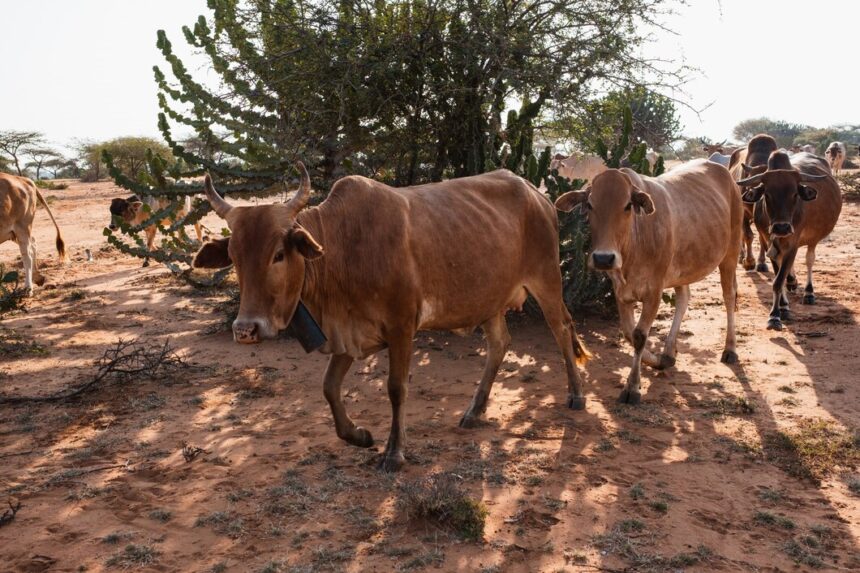Livestock farming is a vital component of South Africa’s agricultural sector, contributing significantly to food production, employment, and the economy. Effective livestock management is essential for maximizing productivity, ensuring animal welfare, and maintaining sustainable farming practices. Here are ten techniques that South African farmers can utilize for efficient and successful livestock management:
1. Pasture Management
Importance:
Effective pasture management is crucial for providing nutritious forage, optimizing grazing areas, and preventing overgrazing and soil erosion.
Techniques:
- Rotational Grazing: Divide pastures into smaller paddocks and rotate livestock regularly to allow forage to regrow and prevent soil degradation.
- Rest Periods: Implement rest periods for pastures to allow grass to recover and rejuvenate, improving overall forage quality.
- Soil Fertility: Conduct soil tests and apply appropriate fertilizers to maintain soil fertility and promote healthy pasture growth.
2. Health Monitoring
Importance:
Regular health monitoring is essential for detecting and preventing disease outbreaks, identifying nutritional deficiencies, and ensuring overall herd health.
Techniques:
- Routine Check-ups: Conduct regular health checks on livestock to monitor body condition, identify signs of illness or injury, and administer vaccinations and treatments as needed.
- Parasite Control: Implement parasite control measures such as deworming and fly control to prevent infestations and minimize production losses.
- Quarantine Protocols: Quarantine new animals to prevent the spread of infectious diseases and parasites to the existing herd.
3. Nutritional Management
Importance:
Proper nutrition is essential for supporting growth, reproduction, and overall health in livestock.
Techniques:
- Balanced Diet: Provide a balanced diet tailored to the nutritional needs of each species and stage of production, including adequate protein, energy, vitamins, and minerals.
- Feed Testing: Analyze feed and forage samples to determine nutrient content and adjust diets accordingly to meet livestock requirements.
- Water Quality: Ensure access to clean, fresh water at all times, as water quality can impact animal health and productivity.
4. Herd Health Records
Importance:
Maintaining accurate health records helps track individual animal performance, monitor disease trends, and make informed management decisions.
Techniques:
- Record-Keeping: Document vaccination schedules, treatments, births, deaths, and any health-related observations for each animal.
- Data Analysis: Regularly review health records to identify patterns or trends that may indicate underlying health issues or management challenges.
- Digital Tools: Utilize digital tools and software applications for streamlined record-keeping and data analysis.
5. Reproductive Management
Importance:
Efficient reproductive management ensures optimal breeding outcomes, genetic progress, and herd productivity.
Techniques:
- Estrus Detection: Monitor female animals for signs of estrus to optimize timing for artificial insemination or natural mating.
- Breeding Soundness Exams: Conduct breeding soundness exams for males to assess reproductive health and fertility before breeding season.
- Genetic Selection: Implement selective breeding programs to improve desirable traits such as growth rate, milk production, and disease resistance.
6. Animal Handling and Welfare
Importance:
Proper handling techniques and animal welfare practices are essential for reducing stress, minimizing injuries, and promoting positive behavior.
Techniques:
- Low-Stress Handling: Use calm, gentle handling methods to minimize stress during mustering, loading, and transportation.
- Facilities Design: Design handling facilities with animal welfare in mind, incorporating features such as non-slip flooring, adequate lighting, and well-designed handling chutes.
- Training: Provide training to farm workers on proper animal handling techniques, emphasizing safety, animal welfare, and efficient handling practices.
7. Biosecurity Measures
Importance:
Biosecurity measures are critical for preventing the introduction and spread of infectious diseases on the farm.
Techniques:
- Biosecurity Plan: Develop and implement a comprehensive biosecurity plan that includes protocols for visitors, equipment, and animal movements.
- Disease Surveillance: Monitor livestock health closely and report any signs of illness to a veterinarian for prompt diagnosis and treatment.
- Quarantine: Quarantine new animals and isolate sick or recently treated animals to prevent disease transmission within the herd.
8. Environmental Management
Importance:
Managing environmental factors such as temperature, humidity, and ventilation is essential for maintaining animal comfort and health.
Techniques:
- Shelter: Provide adequate shelter from extreme weather conditions, including shade in hot climates and protection from wind and rain in cold climates.
- Ventilation: Ensure proper ventilation in housing facilities to prevent heat stress, respiratory problems, and the buildup of harmful gases.
- Bedding and Flooring: Use appropriate bedding materials and flooring surfaces that promote cleanliness, comfort, and good hoof health.
9. Recorded Genetic Management
Importance:
Recorded genetic management involves selecting breeding stock based on performance data to improve herd genetics and productivity.
Techniques:
- Performance Recording: Collect and analyze data on traits such as growth rate, milk production, carcass quality, and disease resistance to identify superior animals for breeding.
- Genetic Evaluation: Use genetic evaluation tools such as Estimated Breeding Values (EBVs) to rank animals based on their genetic merit and potential to improve desired traits.
- Breeding Objectives: Define clear breeding objectives and selection criteria aligned with farm goals, market demands, and environmental conditions.
10. Continuous Learning and Training
Importance:
Continuous learning and training are essential for staying informed about new technologies, best practices, and industry developments in livestock management.
Techniques:
- Professional Development: Attend workshops, seminars, and training programs offered by agricultural organizations, universities, and industry experts.
- Networking: Engage with fellow farmers, veterinarians, extension agents, and researchers to share knowledge, experiences, and resources.
- Online Resources: Utilize online resources, publications, and educational materials to access up-to-date information on livestock management practices and innovations.
Effective livestock management requires a combination of knowledge, skills, and practical techniques tailored to the specific needs of each farm operation. By implementing these ten techniques, South African farmers can optimize productivity, enhance animal welfare, and maintain sustainable farming practices. Continuous improvement, adaptation to changing conditions, and a commitment to lifelong learning are key principles for successful livestock management in South Africa’s dynamic agricultural landscape.
Join 'Farmers Mag' WhatsApp Channel
Get the latest Farming news and tips delivered straight to your WhatsApp
CLICK HERE TO JOIN






